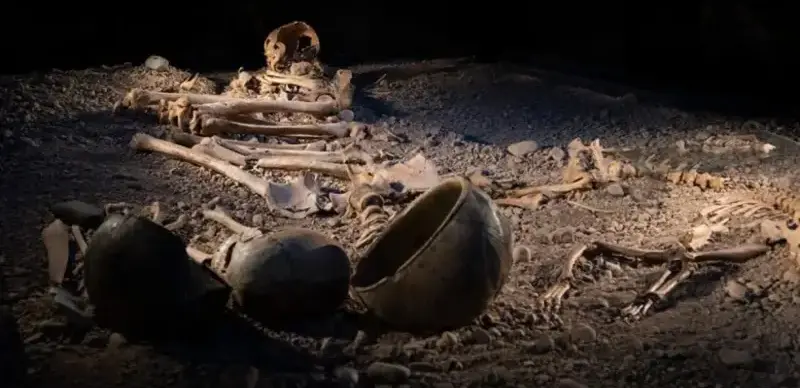Scientists discover a deadly threat to the Stone Age
- March 23, 2024
- 0
Bacterial poisoning from food and water, as well as through contact such as kissing, caused much suffering in the Stone Age. A recent study shows that diseases that
Bacterial poisoning from food and water, as well as through contact such as kissing, caused much suffering in the Stone Age. A recent study shows that diseases that

Bacterial poisoning from food and water, as well as through contact such as kissing, caused much suffering in the Stone Age. A recent study shows that diseases that can be treated with antibiotics today were fatal back then.
People living nearby and not having access to antibiotics sounds like a nightmare. But we spent most of our history and prehistory this way. A new international study coordinated by the Center for Palaeogenetics in Stockholm examines Stone Age microbes in Scandinavia.
Several types of microbes are identified that are both expected in a healthy person and cause pain and distress: Neisseria meningitidis, which spreads through close contact between people, such as kissing, and Yersinia entrecolitica, which usually comes from contaminated people. food and water, as well as Salmonella enterica, a common cause of modern food poisoning.
“The case of Salmonella enterica in particular shows us how difficult this can be. We found two infected individuals at the cultural burial ceremony with a battle ax at Bergsgraven in Linköping, and it is quite possible that we will witness their death,” says Nora Bergfeldt, who studies bacteria at the Department of Zoology at Stockholm University. . Diseases seen in prehistoric societies.
In the study, 38 people from farming and hunter-gatherer backgrounds were tested for microbes. Material from Hummerviksholmen in southern Norway (9500 years old) to Bergsgraven in Linköping, Sweden (4500 years old) was examined. The genetic material of microbes, such as bacteria and some viruses, is organized in DNA, just like we humans.
This is why this type of microbial DNA can be found in the remains of infected people. It is this type of microbial DNA that scientists used to track bacterial diseases in the Scandinavian Stone Age. The transition from a hunter-gatherer lifestyle to an agricultural lifestyle is particularly interesting and may be reflected in bacterial diseases.
“We know when people started farming in Scandinavia, but we still don’t know how this lifestyle change affected overall health,” says Helena Malmström from the Human Evolution Program at Uppsala University. She focused a significant part of her research on lifestyle changes in the Stone Age.
“The more people interacted, the more opportunities they had to infect each other. But even though we do encounter bacteria like Yersinia pestis that can affect society, foodborne infections are the ones that stand out most among the lifestyles in this study,” says Dr. Conducted by Anders Geteström. And he sees potential in the field of research: “It is surprising to us that we can begin to study a hitherto unexplored part of prehistoric societies.”
Source: Port Altele
As an experienced journalist and author, Mary has been reporting on the latest news and trends for over 5 years. With a passion for uncovering the stories behind the headlines, Mary has earned a reputation as a trusted voice in the world of journalism. Her writing style is insightful, engaging and thought-provoking, as she takes a deep dive into the most pressing issues of our time.